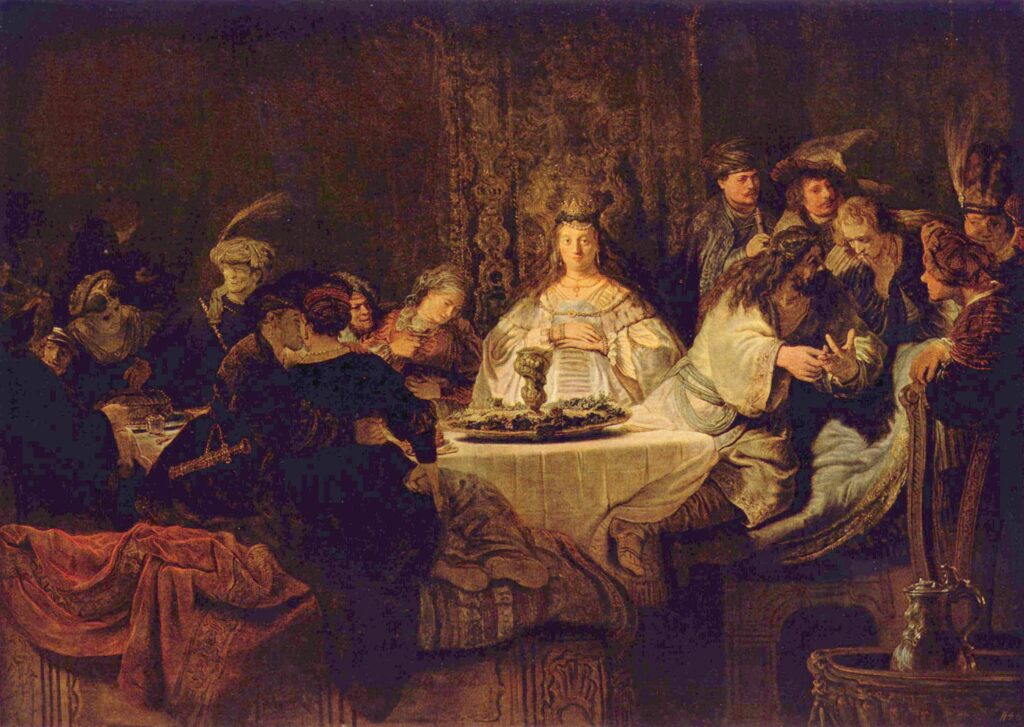Cantata 195 is a wedding cantata in which Bach uses a double choir setting. This cantata was performed at least 3 times during Bach’s life. We know that Bach, per usual, adapted and adjusted the piece each time, but all we have is a full score of the last version.
We don’t know who the couples getting married were for any of the occasions, with the exception of the second performance (around 1741), for which some clues point to the bride possibly being Johanna Eleonora Schütz – great niece of Heinrich Schütz. The rich instrumentation of the surviving score suggests that, at least for the third performance, the bridal couple were important personalities (and possibly quite wealthy to fund such a display!).
We also don’t know who the author of the libretto is. The first movement comes from Psalm 97 (verses 11-12), and the final chorale is on a text by Paul Gerhardt of 1647. There are theories that suggest that the addition of the chorale happened for the last revision of the cantata, and that it replaced three movements intended to be performed after the wedding.
The opening movement is a stunning choral double fugue, scored for 3 trumpets, timpani, 2 flutes and 2 oboes (doubling each other), strings and continuo, plus double choir – soloists and ripienists. Each verse of the Psalm has a distinct fugal theme, first entrusted to the soloists and punctuated by interventions of the ripieno voices before each soloist’s entrance. One by one, the ripieno voices join the soloists to close the first section. Interestingly, the meter changes from C to 6/8 for the second section, which could be illustrating the fact that the second verse is addressed towards humankind. The same structure ensues – soloists stating the theme of the second fugue (with the first trumpet also getting an independent fifth part), and then one by one the ripieno voices join for a resounding close. Quite a remarkable movement which no doubt could shed light onto the One-Voice-Per-Part (OVPP) controversy – showing how Bach chose to utilize soloists and ripienists when he had the resources to do so.
The next movement is a secco recitative for the bass, on a florid and fast-moving continuo line, possibly an illustration of “joyful light”. This text mentions “justice” as a virtue of the new couple, which could be a reference to the legal profession. It’s interesting how Bach draws attention to the final 2 lines of the recitative (a vow for the new couple) by changing the rhythm of the accompaniment.
The recitative leads to a joyous and celebratory aria for the bass, accompanied by 2 oboes and the full string band. The concept of joy is reflected on the Lombardic rhythms throughout, quite unusual for Bach and a sign of forward-thinking towards the “galant” style.
The following movement is a soprano recitative, accompanied by the winds – 2 flutes and 2 oboes d’amore. The ascending and descending scales of the flutes could be illustrating the band wrapped around the couple’s hands, as mentioned in the text.
This leads to a second chorus – a very unusual feature in Bach’s cantatas. Again, the vocal forces are split between soloists and ripienists, with the former introducing the fugal section (including a quite virtuosic passage of 16th notes for the bass on the word “preisen”, i.e. “praise”) and the latter re-joining them to close the section. Similarly, the “B” section, in contrasting homophonic layout, is opened by the soloists and closed by “tutti” before looping back for the Da Capo.
This is the moment of the ceremony where the wedding would have happened.
The surviving version of the cantata simply closes right after the wedding with a chorale, in which the trumpets have been replaced by two French horns (a clue pointing to different instrumentation in a former version of the cantata). The first horn joins the flutes and sopranos on the chorale tune, while the second one gets an independent part, making its presence especially distinct with the syncopations in the very last phrase.
